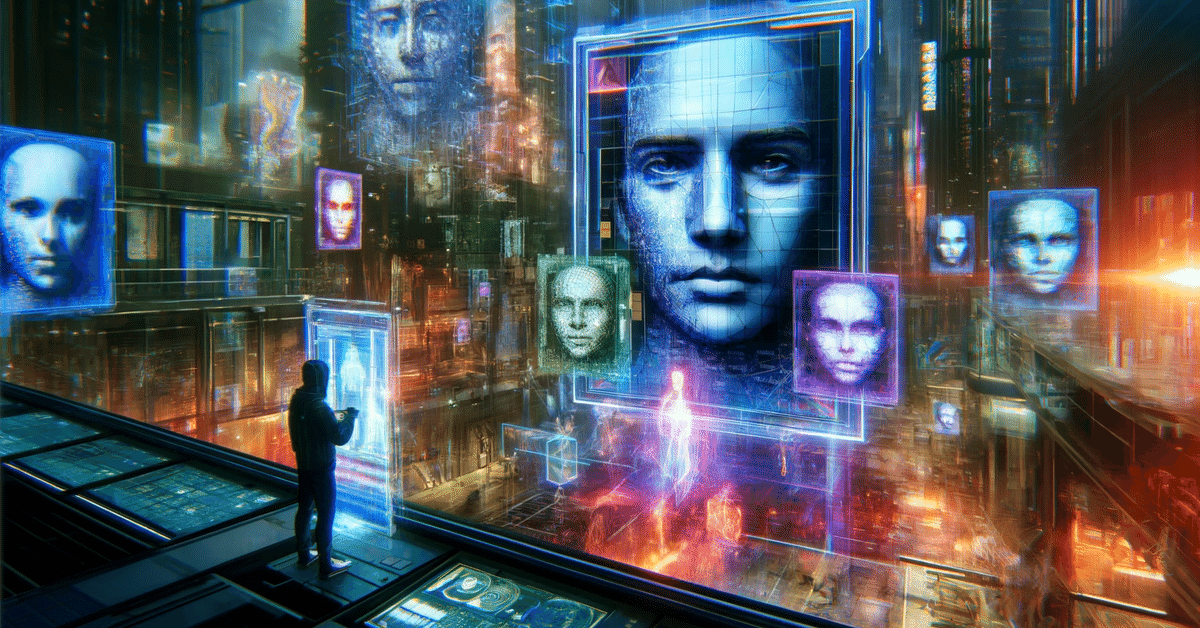
"Bilingual Post" 「フェイク画像の脅威と見抜き方:AIが創り出す偽りの世界」 ”The Threat of Fake Images and How to Spot Them: The False World Created by AI”
近年、AI技術の発展により、本物と見分けがつかないほど精巧なフェイク画像が簡単に作れるようになっています。しかし、こうしたフェイク画像は、個人情報の流出や名誉毀損、社会不安の煽動など、様々な被害を生み出す可能性があります。
最終的には人間が判断する必要がある
越前教授は、フェイク画像検出技術が進歩しているものの、最終的な判断は人間が行う必要があると指摘します。AIは、画像の不自然な点を見つけ出す能力に優れていますが、文脈や背景を理解することは苦手です。そのため、AIが検出した疑わしい画像を、人間が最終的に真偽を判断する必要があります。
フェイク画像の被害事例
越前教授は、フェイク画像によって実際に起こった被害事例を紹介しました。
なりすまし: 自分の顔写真を合成された画像で悪質な出会い系サイトに登録され、被害を受けた事例
名誉毀損: 政治家の合成画像がSNSで拡散され、名誉を毀損された事例
社会不安の煽動: デモ隊の過激な行動を映したフェイク動画が拡散され、社会不安を煽動した事例
これらの事例は、フェイク画像がいかに深刻な被害をもたらすかを物語っています。
「守るAI」の進化
フェイク画像の脅威に対抗するため、越前教授は「守るAI」の開発に取り組んでいます。「守るAI」は、AI技術を用いてフェイク画像を検出する技術です。
越前教授は、顔の形状や表情、皮膚の質感など、様々な特徴に着目してフェイク画像を検出する「MesoNet」という技術を紹介しました。「MesoNet」は、99.8%の精度でフェイク画像を検出できることが実証されています。
未来への展望
越前教授は、フェイク画像の脅威から身を守るためには、技術的な対策だけでなく、情報リテラシーの向上も重要であると強調します。
フェイク画像を見抜くためには、以下の点に注意する必要があります。
画像の出典を確認する
画像の不自然な点を探す
情報源の信頼性を評価する
また、フェイク画像を見かけたら、拡散せずに情報提供を行うことも重要です。
AI技術の発展は、私たちの生活を豊かにしてくれます。しかし、同時にフェイク画像のような新たな脅威も生み出しています。フェイク画像の被害を防ぐためには、技術的な対策と情報リテラシーの向上が不可欠です。
In recent years, the development of AI technology has made it easier than ever to create fake images that are indistinguishable from real ones. However, these fake images can have a variety of harmful consequences, including the spread of misinformation, the theft of personal information, and the defamation of individuals.
The Need for Human Judgment
Professor Echizen, who gave a lecture on this topic at the National Institute of Informatics (NII) in Tokyo on March 4, 2024, pointed out that while fake image detection technology is improving, the final judgment must be made by humans. AI is good at finding unnatural features in images, but it is not good at understanding context or background. Therefore, it is necessary for humans to ultimately determine the authenticity of images that AI has flagged as suspicious.
Examples of Fake Image Damage
Professor Echizen also presented examples of the damage that has been caused by fake images. These include:
Impersonation: A person was impersonated in a fake image that was used to create a malicious dating profile.
Defamation: A politician was defamed by a fake image that was circulated on social media.
Incitement to social unrest: A fake video of a protest that showed violent behavior was circulated, inciting social unrest.
These examples illustrate the serious harm that fake images can cause.
The Evolution of "Protective AI"
To combat the threat of fake images, Professor Echizen is working on the development of "protective AI." This is a technology that uses AI to detect fake images.
Professor Echizen introduced a technology called "MesoNet," which detects fake images by focusing on various features, such as facial shape, expression, and skin texture. MesoNet has been shown to be able to detect fake images with 99.8% accuracy.
The Future
Professor Echizen emphasized that in order to protect ourselves from the threat of fake images, it is important to take both technical and educational measures.
To spot fake images, it is important to:
Verify the source of the image.
Look for unnatural features in the image.
Evaluate the credibility of the source.
It is also important to report fake images to the authorities if you see them.
The development of AI technology has enriched our lives, but it has also created new threats, such as fake images. In order to prevent the damage caused by fake images, it is essential to take both technical and educational measures.
I hope this translation is helpful. Let me know if you have any other questions.
#フェイク画像に注意 #AI技術の進化 #情報リテラシー向上
#BewareFakeImages #EvolutionOfAI #ImprovingInformationLiteracy
この記事が気に入ったらサポートをしてみませんか?
